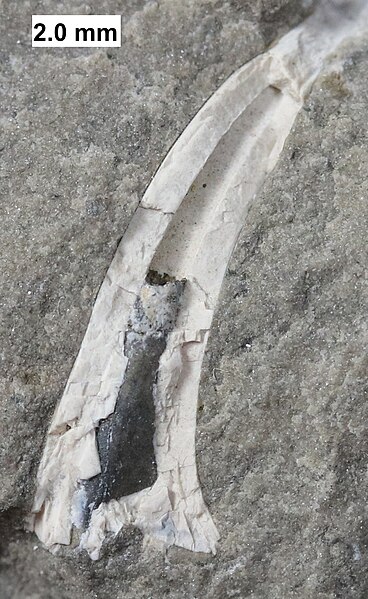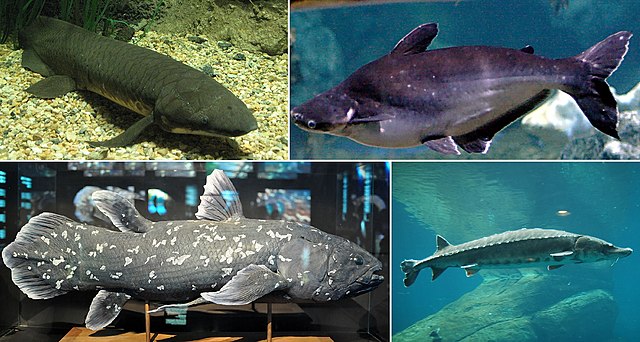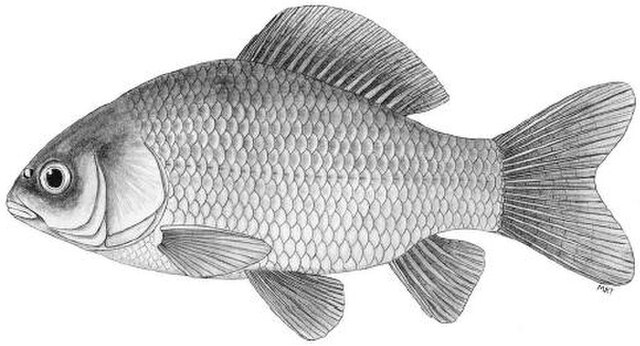Sarcopterygii — sometimes considered synonymous with Crossopterygii — is a clade including both a group of bony fish commonly referred to as lobe-finned fish, and tetrapods. They are characterised by prominent muscular limb buds (lobes) within their fins, which are supported by articulated appendicular skeletons. This is in contrast to the other clade of bony fish, the Actinopterygii, which have only skin-covered bony spines supporting the fins.
Guiyu oneiros, the earliest-known bony fish, lived during the Late Silurian, 419 million years ago). It has the combination of both ray-finned and lobe-finned features, although analysis of the totality of its features places it closer to lobe-finned fish.
Tooth from the sarcopterygian Onychodus from the Devonian of Wisconsin
Image: Latimeria Paris
Life restoration of Sparalepis tingi and other fauna from the Silurian of Yunnan
Osteichthyes, also known as osteichthyans or commonly referred to as the bony fish, is a diverse superclass of vertebrate animals that have endoskeletons primarily composed of bone tissue. They can be contrasted with the Chondrichthyes and the extinct placoderms and acanthodians, which have endoskeletons primarily composed of cartilage. The vast majority of extant fish are members of Osteichthyes, being an extremely diverse and abundant group consisting of 45 orders, over 435 families and 28,000 species. It is the largest class of vertebrates in existence today, encompassing most aquatic vertebrates, as well as all semi-aquatic and terrestrial vertebrates.
Osteichthyes
Guiyu oneiros, the earliest known bony fish, lived during the Late Silurian, 425 million years ago. It has a combination of both ray-finned and lobe-finned features.
The ocean sunfish is one of the heaviest bony fish in the world.
Image: Carassius carassius







